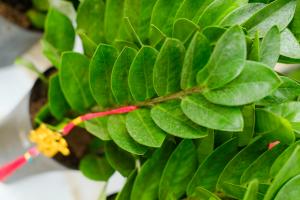What Does It Mean When Water Plants Are Submerged?
Water plants are an essential part of any aquatic ecosystem. They provide shelter and food to a wide variety of aquatic creatures, and they also help to improve water quality by filtering out contaminants. One important aspect of water plant biology is whether the plants are submerged or not. In this article, we will explore what it means when water plants are submerged and how this affects their growth, development, and overall importance to the ecosystem.
What Are Submerged Water Plants?
Submerged water plants, as the name suggests, are plants that grow completely immersed in water. These plants have adapted to an aquatic lifestyle, and their leaves, stems, and roots are designed to function underwater. Some common examples of submerged water plants include eelgrass, pondweeds, and watermilfoils.
Benefits of Submerged Water Plants
Submerged water plants provide a wide range of benefits to aquatic ecosystems. One important function of these plants is to oxygenate the water. Through photosynthesis, underwater plants produce oxygen which is essential for the survival of many aquatic organisms. Additionally, they provide habitat and shelter for many aquatic creatures such as fish and insects. Submerged water plants also help to stabilize sediments and prevent erosion, which is important for maintaining the health of the ecosystem.
Factors Affecting Submerged Water Plant Growth
Submerged water plants require certain conditions to thrive. One important factor is light. Underwater plants need sufficient light to photosynthesize and grow. Factors such as water depth, water turbidity, and the amount of organic matter in the water can all affect the amount of light that reaches the plants. Nutrient availability is also important. Plants need nutrients such as nitrogen and phosphorus to grow, but excessive amounts of these nutrients can lead to algal blooms which can be harmful to the ecosystem. Water temperature and pH can also impact submerged water plant growth.
The Importance of Submerged Water Plants in the Ecosystem
Submerged water plants are critical to the health of aquatic ecosystems. As mentioned earlier, they provide oxygen, shelter, and food for a wide variety of aquatic organisms. Additionally, they improve water quality by filtering out pollutants and stabilizing sediments. They also provide recreational value, as many people enjoy fishing, boating, and swimming in areas where submerged water plants are abundant.
The Impact of Human Activities on Submerged Water Plants
Unfortunately, human activities such as pollution, shoreline development, and dredging can have a negative impact on underwater plant communities. Pollutants such as fertilizers and pesticides can lead to excessive nutrient levels which can cause algal blooms and harm submerged water plants. Shoreline development can destroy or disrupt plant habitats, while dredging can remove important sediments and destabilize the ecosystem. It is important for humans to be aware of the impact their activities can have on aquatic ecosystems and to take steps to minimize their impact.
Conclusion
Submerged water plants are an essential component of aquatic ecosystems. They provide numerous benefits to the environment and are critical for the survival of many aquatic organisms. Understanding the factors that affect their growth and the impact of human activities is important for maintaining the health of these ecosystems. By taking steps to protect and preserve submerged water plants, we can ensure the long-term health and sustainability of our aquatic habitats.

 how many times do yo...
how many times do yo... how many planted tre...
how many planted tre... how many pine trees ...
how many pine trees ... how many pecan trees...
how many pecan trees... how many plants comp...
how many plants comp... how many plants can ...
how many plants can ... how many plants and ...
how many plants and ... how many pepper plan...
how many pepper plan...
































